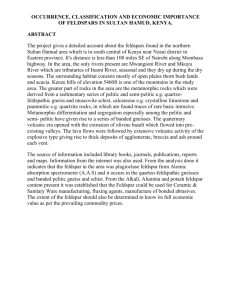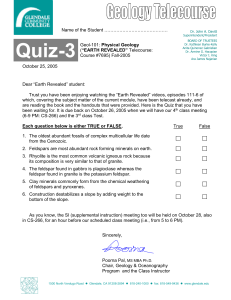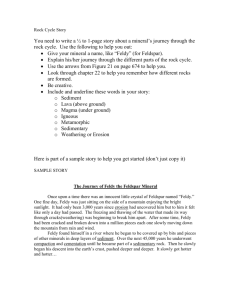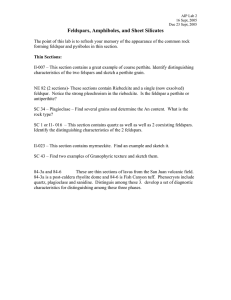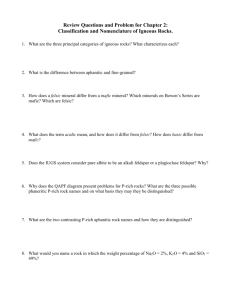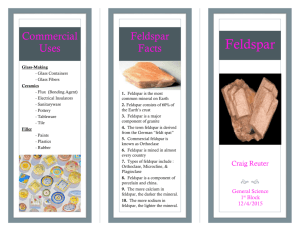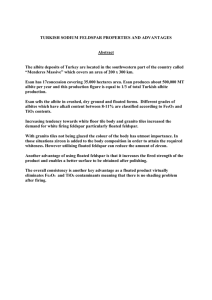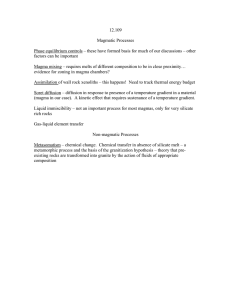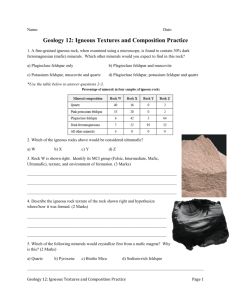identification characterisation and industrial use of feldspars in
advertisement
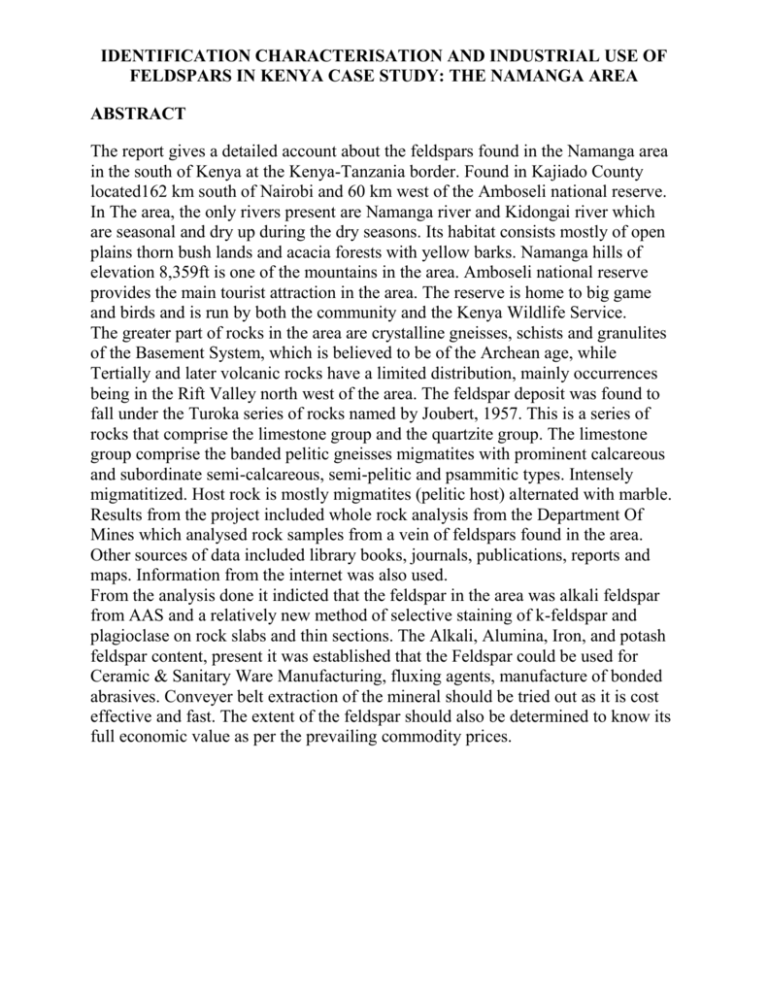
IDENTIFICATION CHARACTERISATION AND INDUSTRIAL USE OF FELDSPARS IN KENYA CASE STUDY: THE NAMANGA AREA ABSTRACT The report gives a detailed account about the feldspars found in the Namanga area in the south of Kenya at the Kenya-Tanzania border. Found in Kajiado County located162 km south of Nairobi and 60 km west of the Amboseli national reserve. In The area, the only rivers present are Namanga river and Kidongai river which are seasonal and dry up during the dry seasons. Its habitat consists mostly of open plains thorn bush lands and acacia forests with yellow barks. Namanga hills of elevation 8,359ft is one of the mountains in the area. Amboseli national reserve provides the main tourist attraction in the area. The reserve is home to big game and birds and is run by both the community and the Kenya Wildlife Service. The greater part of rocks in the area are crystalline gneisses, schists and granulites of the Basement System, which is believed to be of the Archean age, while Tertially and later volcanic rocks have a limited distribution, mainly occurrences being in the Rift Valley north west of the area. The feldspar deposit was found to fall under the Turoka series of rocks named by Joubert, 1957. This is a series of rocks that comprise the limestone group and the quartzite group. The limestone group comprise the banded pelitic gneisses migmatites with prominent calcareous and subordinate semi-calcareous, semi-pelitic and psammitic types. Intensely migmatitized. Host rock is mostly migmatites (pelitic host) alternated with marble. Results from the project included whole rock analysis from the Department Of Mines which analysed rock samples from a vein of feldspars found in the area. Other sources of data included library books, journals, publications, reports and maps. Information from the internet was also used. From the analysis done it indicted that the feldspar in the area was alkali feldspar from AAS and a relatively new method of selective staining of k-feldspar and plagioclase on rock slabs and thin sections. The Alkali, Alumina, Iron, and potash feldspar content, present it was established that the Feldspar could be used for Ceramic & Sanitary Ware Manufacturing, fluxing agents, manufacture of bonded abrasives. Conveyer belt extraction of the mineral should be tried out as it is cost effective and fast. The extent of the feldspar should also be determined to know its full economic value as per the prevailing commodity prices.
